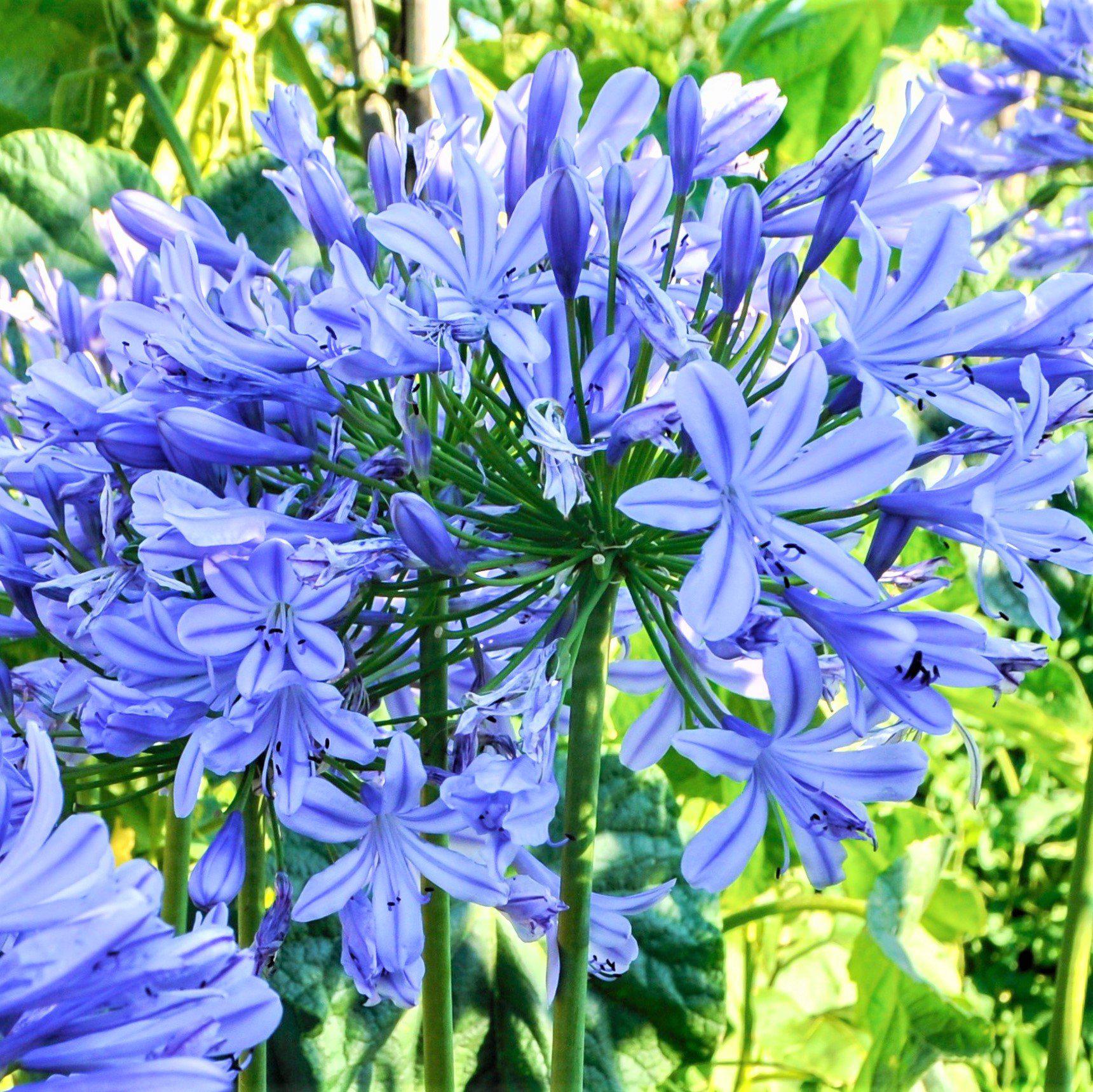Seasonal Agapanthus Treatment: Getting Ready For Winter Season and Summertime
Seasonal Agapanthus Treatment: Getting Ready For Winter Season and Summertime
Blog Article
Grasping the Art of Agapanthus Treatment: Crucial Actions for Healthy Growth and Vibrant Blooms
In the realm of horticulture, the growing of agapanthus stands as a satisfying venture for those who look for to nurture these classy blooming plants. From choosing the ideal variety to understanding pruning strategies, the journey in the direction of growing prospering agapanthus plants is diverse and holds the crucial to unlocking the complete potential of these organic treasures.

Selecting the Right Agapanthus Variety

When selecting the appropriate Agapanthus variety for your garden, take into consideration factors such as environment suitability, blossom shade, and growth behavior. Furthermore, take into consideration the climate in your area to make sure the Agapanthus selection you select can thrive in your particular conditions. Recognizing the growth routine of different Agapanthus varieties is essential for proper positioning within your yard.
Suitable Planting Problems
Thinking about the optimum environmental needs is vital for effective Agapanthus growing. Agapanthus grows in well-draining soil with a slightly acidic to neutral pH level. When growing, pick a place that receives complete sunlight to partial color. In hotter climates, offering some mid-day color can stop scorching of the fallen leaves. Agapanthus plants are sensitive to cool temperature levels and ought to be secured from frost throughout cold weather.
To make sure healthy and balanced development and vibrant blooms, plant Agapanthus light bulbs at a deepness of concerning 2-4 inches and space them 8-12 inches apart. Mulching around the base of the plants aids keep dampness and subdues weed growth.
Watering and Feeding Tips
Preserving correct moisture degrees and providing vital nutrients are crucial elements in the treatment routine for Agapanthus plants. When it comes to watering Agapanthus, it is vital to strike a balance. These plants choose regularly damp soil however are at risk to root rot if overwatered.
Feeding Agapanthus is vital for promoting healthy growth and prolific blooms. Use a balanced plant food, such as a 10-10-10 formula, in the very early spring as brand-new growth arises. Repeat this application every 6-8 weeks throughout the expanding period. Avoid too much fertilizing, as it can bring about lavish vegetation at the expense of blooms. Constantly follow the manufacturer's guidelines for correct dilution and application methods. By complying with these watering and feeding pointers, you can guarantee your Agapanthus plants thrive and produce dynamic, durable blooms.
Pruning Techniques for Agapanthus
Pruning Agapanthus plants at the proper times and with appropriate methods is essential for preserving their health and promoting optimum development and flowering. The perfect time to prune Agapanthus remains in late winter months or very early springtime prior to brand-new development emerges. Start by getting rid of any yellowing or dead leaves near the base of the plant. Cut them as close to the ground as feasible without harming the arising shoots.
For flowered stems, wait up until the blooms have actually withered and then trim them back to the base. This not just cleans the plant's appearance but also motivates the advancement of new blossom buds. Deadheading spent flowers can additionally redirect the plant's power right into producing more flowers instead of establishing seeds. However, if you Read Full Report desire to gather seeds for breeding, leave some blossoms to completely dry and mature on the plant.
Remember to make use of tidy, sharp tools to make accurate cuts and minimize the danger of presenting illness. Agapanthus. Normal trimming will certainly assist maintain your Agapanthus looking neat and healthy while guaranteeing an abundant display of beautiful blooms
Managing Typical Insects and Conditions
After making certain appropriate pruning methods for Agapanthus, it is vital to address usual insects and conditions that can affect the health and vigor of these plants. Agapanthus plants are normally durable however can still come down with particular issues. One usual insect that affects Agapanthus is the Agapanthus gall midge. This small, orange fly lays its eggs in the foliage, bring about distorted development and blossom buds that fall short to open. To combat this pest, trim and ruin any type of affected plant parts and consider using insecticidal soap.
Additionally, Agapanthus plants can experience from origin rot if they are grown in inadequately draining pipes dirt. By being watchful and taking timely activity versus conditions and parasites, you can help your Agapanthus plants thrive and produce vibrant blooms. Agapanthus.

Verdict
In verdict, grasping the art of agapanthus care involves picking the ideal range, giving ideal planting problems, appropriate watering and fertilizing, ideal pruning techniques, and resolving usual insects and conditions. By complying with these crucial have a peek at these guys actions, you can make certain healthy growth and dynamic blooms for your agapanthus plants. Keep in mind to routinely keep track of and maintain your plants to promote their total health and long life.
To make certain healthy and balanced growth and vibrant blooms, plant Agapanthus bulbs at a depth of concerning 2-4 inches and space them 8-12 inches apart. By complying with top article these watering and feeding tips, you can ensure your Agapanthus plants grow and create vibrant, durable blooms.
One usual pest that affects Agapanthus is the Agapanthus gall midge. Additionally, Agapanthus plants can endure from root rot if they are planted in improperly draining pipes dirt. By complying with these vital steps, you can guarantee healthy growth and vivid blossoms for your agapanthus plants.
Report this page